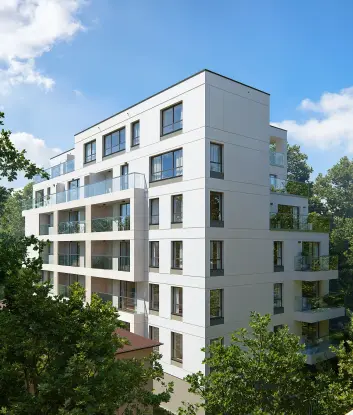Handover a flat from a developer – how to avoid problems?
The acceptance of a dwelling is a key moment that determines whether a new property is in accordance with the contract and meets all building standards. Failure to do so can lead to costly repairs, so it is worth approaching the process with great care. How to avoid problems and what to look out for when collecting a flat from a developer?

1. Preparation for collection
Before you go to the collection, it is worth preparing yourself in substance and taking the right tools with you. First of all, you should have the developer’s contract and the prospectus with you to verify that the flat has been constructed in accordance with the provisions. A projection of the apartment will also be useful, which will help to assess the conformity of the layout of the walls, installations and square footage. For a more detailed inspection, it is advisable to bring a spirit level, a tape measure, a torch to check for irregularities and a camera or camcorder to document any faults.
2. Inspection of the technical condition of the flat
During acceptance, special attention should be paid to the condition of walls, floors, ceilings and windows. The walls should be even and smooth, with no visible cracks or traces of moisture. The slope of the floor can be checked by placing a ball on it – if it rolls, it means that the surface is not level. Windows and doors should also be inspected carefully – they should open and close without resistance and the seals must be properly fitted.
3. Electrical and plumbing installations
It is worth checking that all electrical sockets and switches are working properly. This can be done with a voltage tester or phone charger. Water taps, drains and plumbing should be in full working order – turn the water off and check for leaks and that drains are working properly.
4. Ventilation and heating
You can test the operation of the ventilation by placing a piece of paper against the ventilation grille – it should suck gently. If the piece of paper falls down, this may indicate a poor ventilation draught. For heating, it is worth asking how the heating system works and checking that all radiators are correctly installed.
5. Check common areas and documentation
In addition to the flat, it is also a good idea to inspect the stairwells, lifts, parking spaces and storage cells, if provided for in the contract. The developer should also provide you with all the necessary documentation, including the acceptance protocol, instructions for use of the installations and warranties for individual items of equipment.
6. How to report defects?
All defects discovered should be recorded in the acceptance protocol. The developer is obliged to rectify them within a certain time limit, so it is a good idea to keep a copy of the document and monitor the progress of the repairs. If the defects are not removed within the agreed timeframe, you can enforce your rights under the warranty.
The acceptance of the flat is one of the most important stages of purchasing a property. A thorough inspection of all elements will avoid unpleasant surprises and additional costs in the future.
Read also
See all

Ivory on sale!
Find out more


